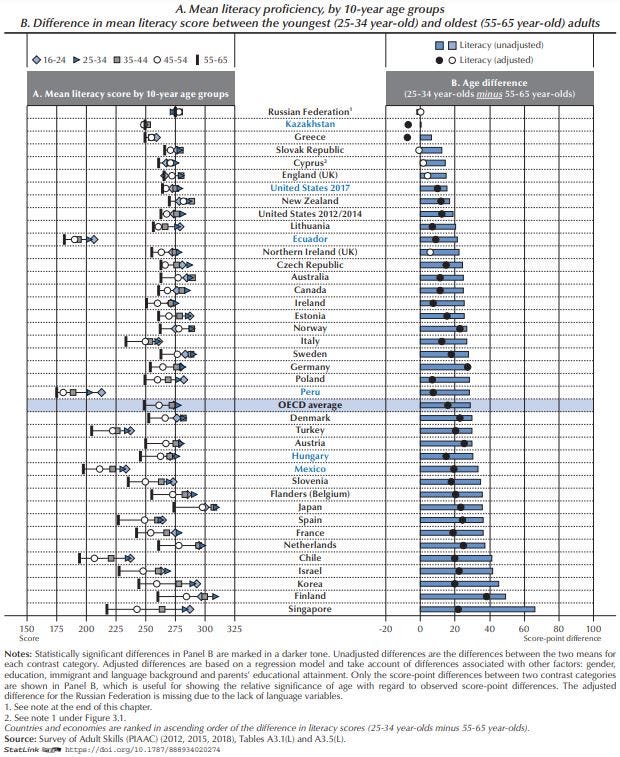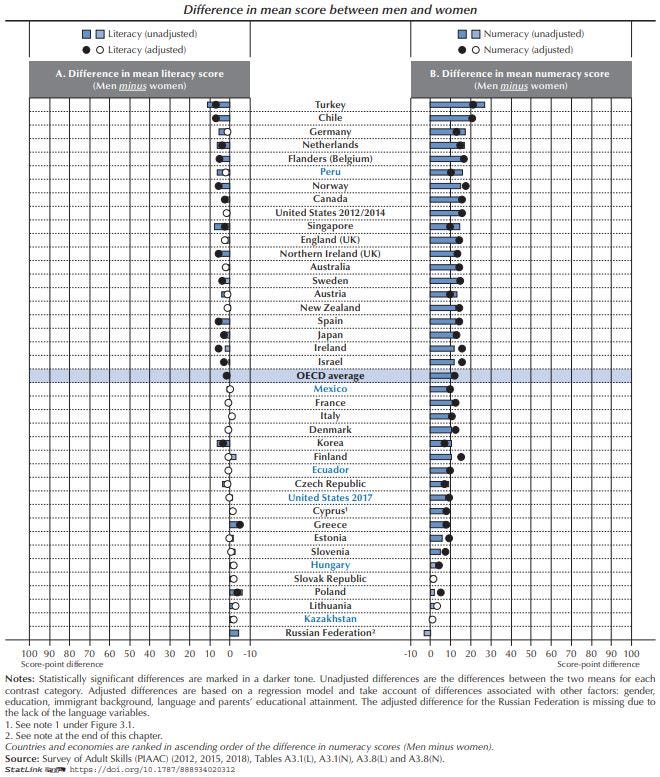PIAAC defines literacy as the ability to understand, evaluate, use and engage with written texts to participate in society, achieve one's goals, and develop one's knowledge and potential. The PIAAC Literacy assessment covers a range of different types of texts, contexts, and cognitive strategies to reflect the challenges adults face in modern societies. The results of the assessment are reported in six proficiency levels, with detailed descriptions of the types of tasks that adults at different levels can perform successfully.
Adult literacy skills
The Programme for the International Assessment of Adult Competencies (PIAAC) defines literacy as the ability to understand, evaluate, use and engage with written texts to participate in society and achieve one's goals. Through the Survey of Adult Skills, PIAAC assesses and describes the literacy skills of adults aged 16-65.

Key messages
Strong literacy skills help adults achieve their objectives and fully participate in modern societies. Adults with higher literacy levels are more likely to be employed and earn higher wages. Moreover, they are more likely to report good or excellent levels of health, to be engaged in volunteering activities and to have higher levels of political efficacy and trust.
On average, across OECD countries that participated in PIAAC, almost 20 percent of adults score at Level 1 or below in literacy, and only 10 percent score at Levels 4 or 5, the highest proficiency levels of literacy. At Level 1, adults are only able to read short texts to locate a single piece of information; at Level 5 they are able to search for and integrate information across multiple and dense texts, and can evaluate evidence and arguments. The share of adults with low literacy skills is above 50 percent in Chile and Mexico and is as low as 5 percent in Japan. In Finland and Japan, more than 20 percent of adults score at the highest literacy levels.
Context
Literacy skills tend to decline with age
Young adults around age 30 tend to have higher literacy skills than older adults. This reflects both cognitive decline related to ageing but also differences across cohorts in levels of educational attainment. Age differences are smaller in countries with more educated older adults.
Age differences in literacy proficiency

Gender differences in literacy proficiency are very small
Differences in literacy proficiency between men and women tend to be very small in the majority of OECD countries. Where gender differences exist, men tend to display higher levels of skills. These results contrast with those from PISA, which shows that at age 15, girls normally have higher reading skills than boys.
Gender differences in literacy and numeracy proficiency

Related publications
Programmes and projects
-
The Survey of Adult Skills, a product of the PIAAC, measures adults’ proficiency in literacy, numeracy and the ability to solve problems in technology-rich environments.Learn more
-
The OECD Indicators of Education Systems (INES) programme seeks to gauge the performance of national education systems through internationally comparable data.Learn more
-
The Education Policy Outlook is an analytical observatory that monitors the evolution of policy priorities and policy developments from early childhood education to adult education, mainly among OECD education systems, to provide a comparative understanding of how policies are evolving, and how they can be best implemented or improved over time.Learn more
-
The OECD’s programme on education and skills policy support policymakers in their efforts to achieve high-quality lifelong learning, which in turn contributes to personal development, sustainable economic growth, and social cohesion.Learn more








